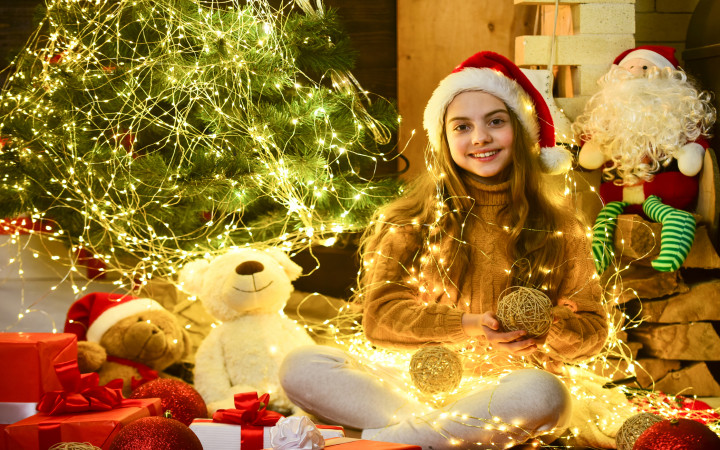Today’s Wonder of the Day was inspired by Natalie. Natalie Wonders, “Why does the Menorah have nine holders for candles?” Thanks for WONDERing with us, Natalie!
As the fall season marches toward winter, you may notice many changes in the world around you. In the northern hemisphere, trees have lost their leaves. The air is getting colder. And, of course, the days grow shorter as the nights last longer.
Darkness can be beautiful—especially when lit by a sky full of stars. And, during fall and winter, people have much more time to gaze upward. The lights that brighten the long nights can seem almost magical. Perhaps this is why light is a powerful symbol for many winter holidays.
Does light have the same meaning for everyone? Not necessarily. In fact, holidays that celebrate light come from many unique cultures and religions. However, light often represents the idea that good will overcome evil.
Which winter holidays celebrate light? One example is Christmas. In Christianity, a bright star is a key symbol of the story behind this holiday. For many, it wouldn’t feel like Christmas without a tree trimmed in twinkling lights and topped with a star. Many people also enjoy seeing light displays that decorate windows and entire houses.
Another example is the Jewish holiday of Hanukkah. Some call it the “Festival of Lights.” It commemorates the miracle of a single day’s supply of oil keeping a lamp lit for eight days. To celebrate, people light the menorah. This includes eight Hanukkah candles and a Shamash candle used to light the others. Families may also recite blessings, sing songs, and exchange gifts.
Light also has a special place in Kwanzaa. This holiday honors the culture of Black Americans. Each evening between December 26 and January 1, a family member lights candles in a holder called the kinara. A discussion of the seven principles of Kwanzaa follows. These are unity, self-determination, collective work and responsibility, cooperative economics, purpose, creativity, and faith.
Those of the Hindu faith celebrate Diwali in October or November each year. It’s marked by family gatherings, glittering clay lamps, and festive fireworks. The holiday also often welcomes strings of electric lights and bonfires. It’s also common for those of Sikh or Jain faith to observe Diwali, especially if they have Indian ancestry.
At first glance, Yule may seem like a celebration of darkness. However, it’s actually a time for those who observe Pagan religions to welcome the return of the Sun. Following the Winter Solstice, which falls on the longest night of the year—between December 20 and 23—people enjoy slightly longer periods of daylight each day. Pagans celebrate by lighting candles, feasting, and gathering with friends and family.
In North America, the Zuni and Hopi peoples also observe the Winter Solstice. Both of these American Indian cultures have celebrated the day with ceremonies and feasts for thousands of years. These are meant to mark the return of their sun god, who brings longer days and shorter nights. In fact, the Hopi Tribe holds a 16-day long celebration during this time.
Of course, many cultures celebrate the New Year with light, especially fireworks. While many New Year celebrations take place on the last day of December, some fall on different days. For example, Tet is the Vietnamese New Year. Based on the lunar calendar, it falls in January or February. People celebrate by making offerings for friendship and family. They also light joss sticks on the family altar several times a day.
Many other holidays use light as a symbol. And they don’t all take place in winter! One example is Eid al-Fitr. This is the end of Islam’s holy month of Ramadan, which usually falls between April and May. Can you think of any others?
What is it about light that makes these events so special? Perhaps it is the simple beauty of candles. Or maybe it’s their similarity to stars. Millions of people have drawn inspiration from the night sky. Perhaps candles and other forms of light inspire us in the same way.
How does light inspire you? Have you ever been moved with emotion by a sunrise? Or what about a brilliant orange sunset? Have you ever been mesmerized by the glow of lights from the skyline of a big city at night? Think about it. What is it about these lights that makes you light up inside?
Standards: CCRA.L.3, CCRA.L.6, CCRA.R.1, CCRA.R.2, CCRA.R.4, CCRA.R.10, CCRA.SL.1, CCRA.SL.2, CCRA.W.2, CCRA.W.4, CCRA.W.8, CCRA.W.7




